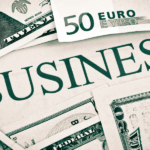Amid economic uncertainties, Sotheby’s and Christie’s auctions in New York became a beacon for the art community. These auctions signaled strong market demand, despite global financial fluctuations in 2025. The lively bidding atmosphere highlighted not only the works’ intrinsic value but also the increasing appetite for masterpieces with significant provenance.
Historically, Christie’s and Sotheby’s have had periods of fluctuating prominence in the art market. Yet, in recent years, both auction houses have consistently delivered robust sales results, underscoring their leading roles in the global art market. Notably, previous compared auctions show fewer dramatic single-evening results, indicating a heightened interest and competitive bid for the rare art pieces offered in the latest event. The evolution of auction strategies and bidders’ preferences also reflects changes in the global economic and cultural backdrop.
What Set This Season Apart?
This season was distinguished by mega-sales such as Christie’s $689 million gain early in the week, led by the Robert F. Weis and Patricia G. Ross Weis collection. Mark Rothko’s No. 31 (Yellow Stripe) was at the forefront, achieving $62.1 million. This result signified the robust demand for high-caliber American collections.
Sotheby’s countered with Leonard A. Lauder’s renowned collection auction, accumulating a record $706 million. Gustav Klimt’s Bildnis Elisabeth Lederer fetched $236.4 million, setting a benchmark for the most valuable work in Sotheby’s Modern category. This selective yet vigorous approach by collectors pointed to a focused market seeking genuine and scarce pieces.
How Does Provenance Influence Collector Confidence in 2025?
Provenance had a notable impact on this season’s market dynamics. The Lauder and Ross Weis collections’ strong performances demonstrated that works with historically significant and compelling backstories captured bidders’ trust and interest. The consistent demand for well-documented pieces underscored the evolving understanding of rarity as linked to provenance and narrative.
Rising participation from a concentrated group of wealthy collectors emphasized the competitiveness for rarities. While not broadly based, the depth is present at the top end of this sector, showing that ultra-wealthy collectors continue to value distinguished artworks highly. According to Megan Fox Kelly, veteran art advisor, these sales reveal a nuanced trend: “The market responded to truly exceptional material,” emphasizing quality and scarcity over volume.
This year’s event also reflected diachronic trends in postwar and contemporary segments. Prominent artists like Basquiat, Rothko, and Monet performed well, indicating robust pricing for well-established masters. This trend was consistent with past observations, indicating a cautious but steady repositioning of the market towards tangible value. In comparison to other markets, the art sector showed unique resilience, drawing interest from diverse global bidders.
As a broader implication, this auction series illustrated the importance of strategic estimate-setting by auction houses. The realistic and competitively positioned estimates were key contributors to the leading houses’ success. Importantly, “demand genuinely exceeded expectations for certain works,” as Kelly noted. These bidding dynamics reflected an enduring demand past the forecasted estimates when it came to high-quality art.







